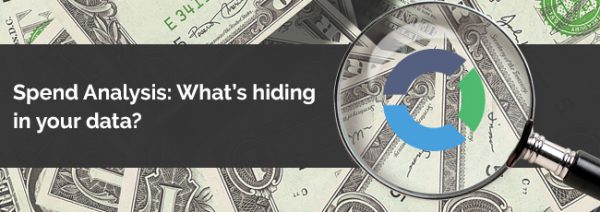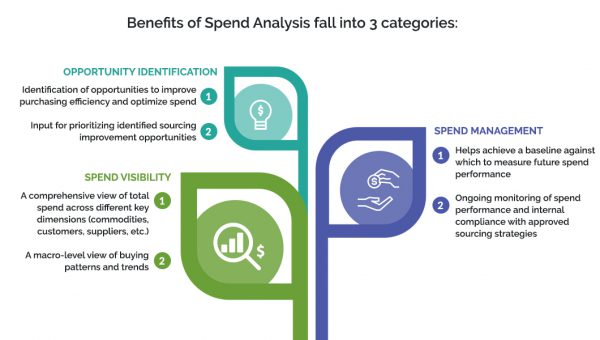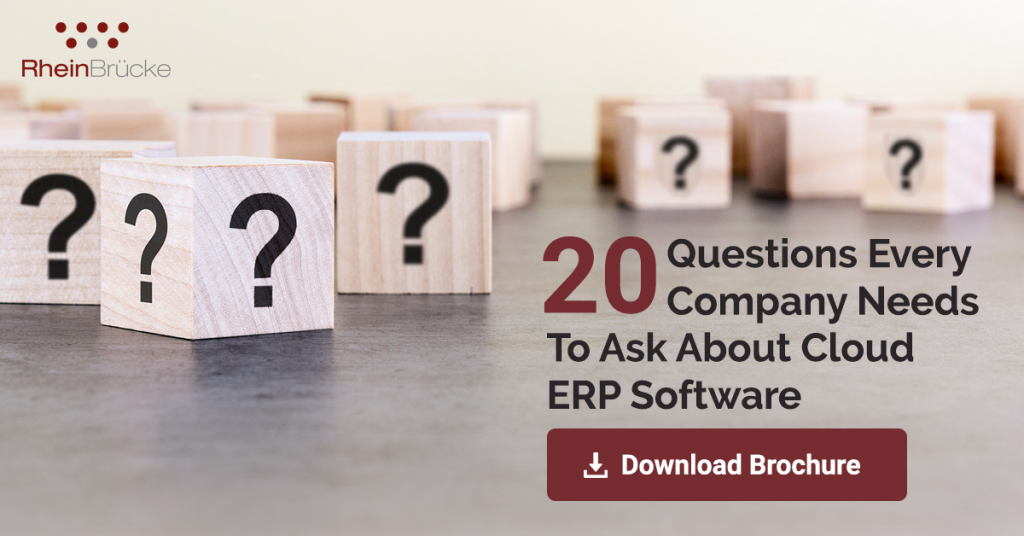

Now that we have introduced Strategic Sourcing and Industry 4.0 in our previous blogs, let’s dive right into the very foundation of Strategic Sourcing and how it helps create value through the purchasing process.
Most companies are already involved with some form of Strategic Sourcing initiative. However, Strategic Sourcing can go beyond cutting costs and have a profound impact on a company’s financials. The key component of this is the ability to control the spend of a business.
Most often, spend goes unquestioned as long as it’s within budget. That’s where organisations go wrong. Focusing on budget should not be the benchmark to analyse company spend. However the main aim should be to understand if spend is essential or non-essential.
With most procurement departments, spend is usually habitual. Which means that buyers will purchase from certain sellers because it is the same seller they have always bought from. But what if there was a way to understand if it’s cheaper to buy from the same seller but perhaps from a different plant or at the same price from a different supplier at a different location which ensures faster delivery times?
In simple terms spend analysis is understanding what we are buying from whom and where, and at what terms.
According to an article by CPO Rising (a website focused on procurement and supply management), “Spend analysis is a foundational business process that can help procurement teams determine the next, best steps in the sourcing process including how to prioritize sourcing resources and where the largest savings opportunities exist. It is the process by which spend data is collected from multiple sources/systems (usually multiple) like AP/accounting, ERP, eProcurement, etc. and aggregated, integrated, analysed, and distilled into usable information that can drive insightful outputs.”
Sound simple enough? Well it may seem easy enough but what’s surprising to know is that spend visibility is a concern for most procurement organisations. Studies show that, procurement organizations manage, on average, just over 60% of total enterprise spend, leaving nearly 40% of all spend beyond their influence and control. That’s definitely an area of concern.
Having a robust spend analysis solution in place has become a prerequisite for running a professional sourcing organization. Let’s look at some of the benefits of investing in a good strategic sourcing solution that has strong Spend Analysis capabilities:
Spend Visibility: The obvious is Spend visibility. Attaining spend visibility can be time consuming and resource intensive; however, when complete, it opens vast opportunities for cost savings. Organisations will be able to identify those procurement categories where excess money is being directed. This means that you’re paying in excess to the value derived from it resulting in poor ROI.
Apart from identifying the best deals and prices offered by your suppliers, spend visibility also helps in planning and maintaining optimum levels of inventory. This helps in placing orders at the right time. For example, you can ensure low prices in periods of little or no demand as opposed to a peak period where suppliers overcharge due to excess demand.
Spend Forecasting: The ability to forecast spend is an important benefit of spend analysis. There are multiple teams in the organization who can use the spend data to forecast future spending. For example, finance and planning can use the spend data to understand recurring vendor spend along with long-term contracts to forecast next few years expenditure.
Similarly, the same information can be used by sourcing teams to work with department owners to help them forecast the spend for their key vendors and categories.
According to a report by the Aberdeen group, the top two factors that have raised the urgency for robust and automated spend analysis are the need to forecast savings from sourcing initiatives and the need to prioritize the top spend categories to focus on.
Supplier Performance Management: Organisations can gain insights into the performance of their suppliers to encourage proactive supplier development. Spend analysis allows organisations to list out non-performing suppliers and in turn help boost contract compliance by monitoring pricing on a continuous basis.
Scorecards help evaluate suppliers and vendors by capturing metrics that evaluate their performance. Gathering a comprehensive spend analysis gives more information on the amount of money an organization spends on purchasing materials and services, and on which suppliers it spends the most. This information is useful on contract negotiations and can be used to maximize the money the organization spends on procurement. When successfully implemented, organizations are able to collaborate with fewer suppliers to attain greater value and establish a more efficient and leaner procurement process.
Spend analytics benefits the buyer and supplier. When negotiating contracts, both parties focus on the strategic goals of both companies and prevent being bogged down in the fight for small cash wins.
Manage risk and maverick spending: In a more dramatic description, maverick spending is when employees ‘go rogue’ and purchase goods or services out of contract or from non-preferred suppliers that do not benefit the company. This impacts profits, contract fulfilment and compliance.
Identifying the maverick spend is essential. This means the organization must ensure spend visibility so as to identify the unmanaged costs. This requires a detailed spend analysis to spot gaps in the spend information. Accountability helps pin-pointing a mistake to a particular source or person, thereby making it easier for organisations to identify the root cause of an issue, ascertain the spend and its source.

A spend analysis is often the first step in aligning a firm’s sourcing strategy with its competitive strategy. When done correctly, it allows the organization to identify opportunities to leverage buying power, reduce costs, improve operational performance and provide better management and oversight of suppliers, while improving relationships with internal and external stakeholders.
According to Aberdeen Research, inadequate spend management capabilities are costing businesses $260 billion in missed opportunities annually. Implementing a comprehensive spend management framework has become imperative to fully realize the impact of strategic sourcing.
Click here if you want to know more about RheinBrücke’s Strategic Sourcing Solution- MeRLIN




